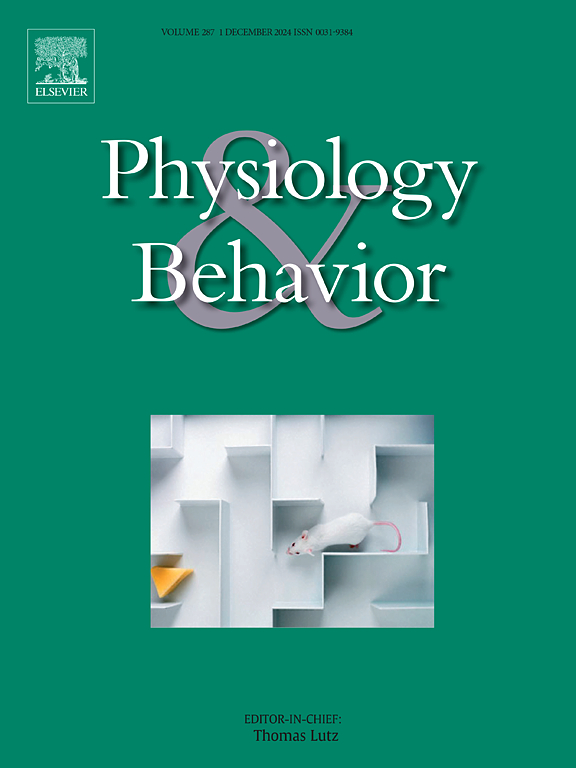Intermittent social isolation enhances social investigation but impairs social memory in adult male mice
IF 2.4
3区 医学
Q2 BEHAVIORAL SCIENCES
引用次数: 0
Abstract
Social isolation profoundly impacts motivated behavior and neural plasticity. While the effects of acute and chronic social isolation have been extensively studied, the consequences of intermittent isolation during adulthood, particularly relevant to modern lifestyles, remain poorly understood. This study investigated the impact of intermittent social isolation (ISI) on social behavior and brain activation in adult male mice. Compared to group-housed controls, ISI males exhibited heightened social investigation and increased social interaction, reminiscent of craving-like behaviors. Intriguingly, this enhanced social investigation was accompanied by impaired social recognition memory in a three-chamber sociability test. Furthermore, ISI induced distinct patterns of neural activation in brain regions governing social processing, including the paraventricular nucleus of the hypothalamus, the intermediate part of lateral septum, the paraventricular nucleus of the thalamus, and the thalamic periventricular gray. Notably, ISI did not affect anxiety-like behaviors or spatial memory, emphasizing its specific impact on social domains. These findings demonstrate that ISI during adulthood selectively enhances social investigation while disrupting social memory in male mice, possibly mediated by distinct neural circuits. Understanding the neurobiological mechanisms underlying these effects may inform interventions for individuals experiencing social isolation, an increasingly prevalent phenomenon in modern society.
间歇性社会隔离增强成年雄性小鼠的社会调查能力,但损害其社会记忆。
社会孤立深刻影响动机行为和神经可塑性。虽然对急性和慢性社会隔离的影响进行了广泛研究,但对成年期间歇性隔离的后果,特别是与现代生活方式相关的后果,仍然知之甚少。本研究探讨了间歇性社会隔离(ISI)对成年雄性小鼠社会行为和脑活动的影响。与集体饲养的对照组相比,ISI雄性表现出更高的社会调查和更多的社会互动,让人想起类似渴望的行为。有趣的是,在三室社交性测试中,这种增强的社会调查伴随着社会识别记忆的受损。此外,ISI在控制社会处理的大脑区域诱导了不同模式的神经激活,包括下丘脑室旁核、外侧隔中间部分、丘脑室旁核和丘脑室周灰质。值得注意的是,ISI不影响类焦虑行为或空间记忆,强调其对社会领域的特定影响。这些发现表明,成年期ISI选择性地增强了雄性小鼠的社会调查,同时破坏了雄性小鼠的社会记忆,可能是由不同的神经回路介导的。了解这些影响背后的神经生物学机制,可以为经历社会孤立的个人提供干预措施,这是现代社会中日益普遍的现象。
本文章由计算机程序翻译,如有差异,请以英文原文为准。
求助全文
约1分钟内获得全文
求助全文
来源期刊

Physiology & Behavior
医学-行为科学
CiteScore
5.70
自引率
3.40%
发文量
274
审稿时长
47 days
期刊介绍:
Physiology & Behavior is aimed at the causal physiological mechanisms of behavior and its modulation by environmental factors. The journal invites original reports in the broad area of behavioral and cognitive neuroscience, in which at least one variable is physiological and the primary emphasis and theoretical context are behavioral. The range of subjects includes behavioral neuroendocrinology, psychoneuroimmunology, learning and memory, ingestion, social behavior, and studies related to the mechanisms of psychopathology. Contemporary reviews and theoretical articles are welcomed and the Editors invite such proposals from interested authors.
 求助内容:
求助内容: 应助结果提醒方式:
应助结果提醒方式:


